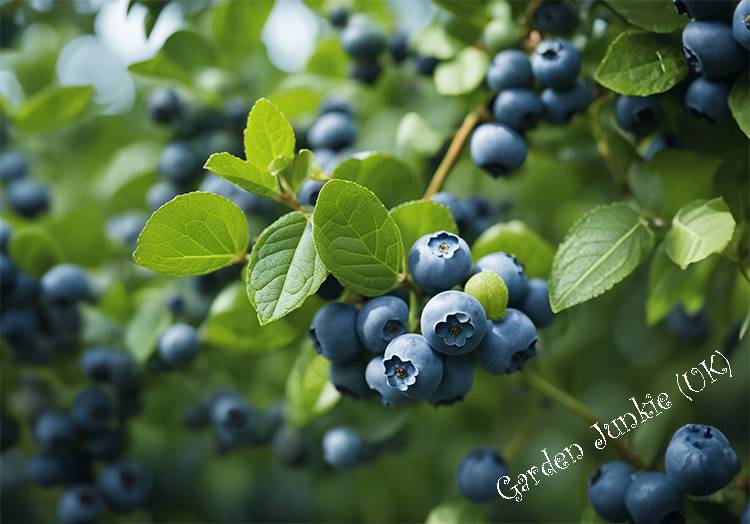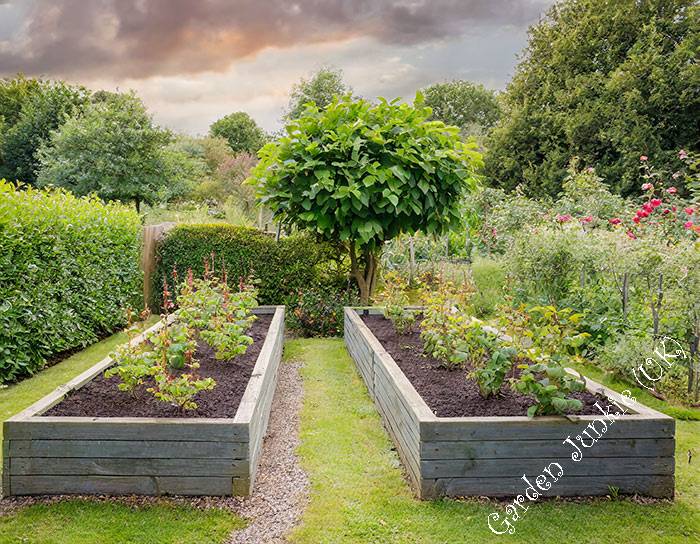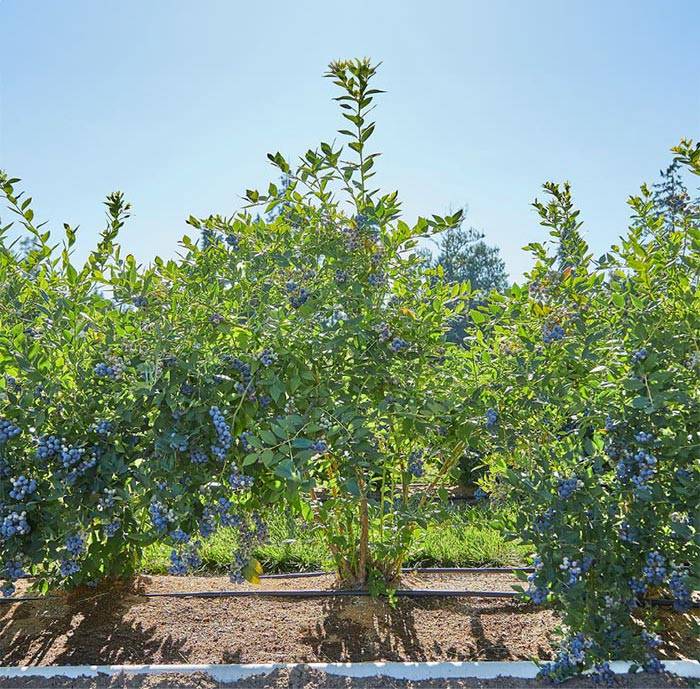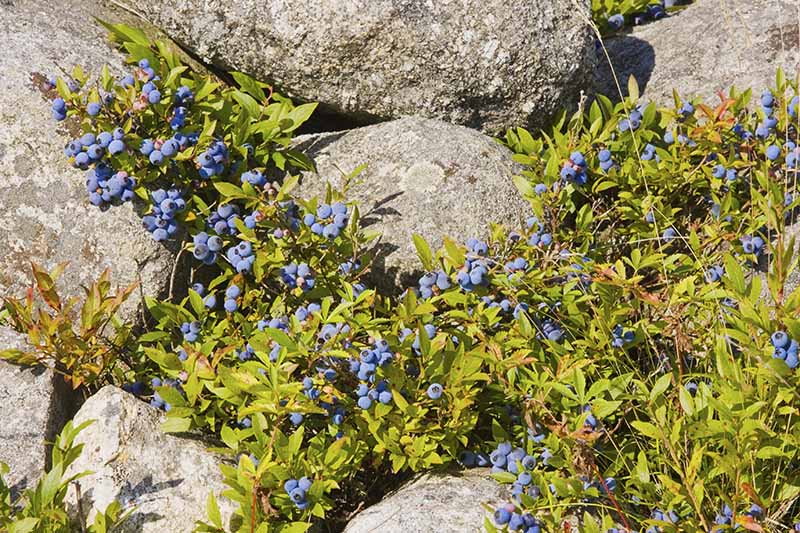Beautiful Plants For Your Interior
How to Grow Blueberries in the UK: A Comprehensive Beginners Guide

You have arrived here because you want to know how to grow blueberries in the UK. Can you even grow blueberries in the UK?
You will be pleased to know that Blueberries are a popular and rewarding fruit to grow in the UK, making them an ideal choice for beginners who want to experiment and improve their gardens and gardening knowledge. With the right knowledge and care, anyone can grow their blueberry plants successfully.
How to Grow Blueberries in the UK: A Beginners Guide – Growing Blueberries Are Easy Providing You Take The Right Steps To Ensure Success
This post will expand on the video above and provide more essential tips and techniques for growing blueberries in the UK. We will cover all aspects of the process; from selecting the right variety, soil type, and plant location, to harvesting and maintaining healthy plants and more.
Before starting our comprehensive blueberry journey, just a few words you can see below for those who want to move quickly with their blueberries. These are the three (3) critical points you must follow above all else for successful blueberry growing, they are location, soil, and drainage. (See the quick guide below)
Please Note: We independently selected all the products mentioned in this Buyer’s Guide. This page includes amongst others, Amazon affiliate links, and we may earn a commission from any purchases made through these links. For more information, please refer to our affiliate’s FAQ page.
As with many things in life, the best location often provides the best outcome, be it a home with a view or a blueberry bush. Blueberries are no different, blueberries thrive in full sun (at least 6 hours daily) for optimal fruit production and flavour development. Partial shade can still produce fruit, but not as abundantly. However, some partial shade during the hottest part of the day can be beneficial, especially in southern regions.
- Shelter: While looking for your sunny spot one should also consider another important factor, wind. Avoid placing your blueberry plants in exposed locations as strong winds, can damage the plants and fruit. A sheltered spot with some protection from the wind is ideal.
What Soil?
Acidic soil is crucial for blueberries, with a pH between 4.5 and 5.5. Most UK soils are alkaline, so test your soil before planting; if it’s not acidic enough, you’ll need to amend the soil with ericaceous compost or incorporate sulphur to amend it or use raised beds or pots filled with ericaceous compost. We will come to ground vs raised beds vs pots later.
Drainage
Another critical factor when growing blueberries is drainage, the roots of blueberry bushes hate to be sat in waterlogged soil. Well-draining soil is crucial to prevent root rot. Avoid waterlogged areas and heavy clay soils. Raised beds and pots can be helpful in such situations as we shall see.

How to Grow Blueberries in the UK: A Beginners Guide – Growing Blueberries in Raised Beds or Pots Can Be an Easy Solution for Beginners
Blueberry Plant Varieties
Nice to have you along, let’s start our journey by understanding the blueberry bushes themselves, you will come across three main types. You’ll encounter Highbush, Lowbush, and Rabbiteye types or varieties. Each has its unique characteristics that make it best suited for different climates, growing styles, and preferences. Here’s a quick breakdown of their key differences:
Highbush (Vaccinium corymbosum)
Highbush blueberries as the name suggests are the tallest of the three, typically reaching 4-8 ft (1.2m- 2.4m) tall and spreading around 3-6 ft (1m – 2m) wide.
Most types of Blueberry plants belong to the Highbush variety, which is then split into Northern Highbush and Southern Highbush varieties. Southern Highbush Blueberries are considered slightly less resilient than Northern Highbush, but they have been proven to thrive in most regions of the UK.
Climate
Northern highbush varieties need more chilling hours (Chilling hours are the number of cumulative hours below 7°Celsius needed for a specific variety to set fruit.) typically 400-800 and thrive in cooler climates. Southern highbush varieties require fewer chilling hours typically 200-400) and do better in warmer zones.
Fruit Characteristics
Typically, Highbush varieties produce, large berries with an excellent flavour, ranging from sweet to tart depending on the cultivar.
Self – Pollination
Most highbush varieties are self-fertile, while lowbush and rabbiteye varieties may require cross-pollination for optimal fruit production.
Disease Resistance
Highbush varieties can be susceptible to certain diseases, while rabbiteye varieties are generally more disease-resistant.
Harvest Season
Highbush and rabbiteye varieties have longer harvest seasons than lowbush, which mature quickly within a few weeks. Northern Highbush plants are perfect for large gardens in cool to moderate climates, offering large, tasty fruits.

How to Grow Blueberries in the UK: A Beginners Guide – Highbush Blueberry Plants For Large Gardens
Lowbush (Vaccinium angustifolium)
As the name suggests, these are compact bushes, growing only 1-2 feet (30-60cm) tall and wide. Ideal for colder regions and smaller gardens, and offers compact plants. On the other hand, Lowbush Blueberries produce smaller fruit and are not commonly grown in the UK due to their inferior (fruit/size) quality.
Climate
Adapted to much colder climates and require plenty of winter chill (800-1000 hours)
Fruit Characteristics
Smaller berries but with a very sweet, intense flavour. Often found wild in North America and used in commercial frozen mixes.
Cross-Pollination
Lowbush blueberries do however require cross-pollination for optimal fruit production.
Disease Resistance
Lowbush varieties are generally more disease-resistant than Highbush and Rabbiteye plants.
Harvest Season
It is ideal for colder regions and smaller gardens, offering intense sweetness in compact plants.

How to Grow Blueberries in the UK: A Beginners Guide – Lowbush Blueberry Plants For Small Gardens In Cooler Areas
Rabbiteye (Vaccinium virgatum)
Rabbiteye blueberries are the last of the 3 blueberry varieties and are the intermediate variety typically reaching 3-8 ft (0.9m-2.4m) tall and spreading around 3-6 ft (1m – 2m) wide.
Rabbiteye blueberry bushes (Vaccinium virgatum) are cultivated in the UK for their delicious and nutritious blueberries. These bushes are known for their adaptability to different soil conditions and their ability to tolerate higher pH levels, making them suitable for cultivation in various regions.
Climate
One thing with the Rabbiteye variety is that they are heat and drought-tolerant, ideal for warmer climates with much lower chilling requirements than the lowbush blueberry bushes, typically (200-400 hours).
Fruit Characteristics
Rabbiteye have medium-sized berries with a mild, sweet flavour. They often have longer harvest seasons than highbush varieties.
Self – Pollination
Like the lowbush variety, the rabbiteye varieties may require cross-pollination for optimal fruit production.
Disease Resistance
Highbush varieties can be susceptible to certain diseases, while rabbiteye varieties are generally more disease-resistant.
Harvest Season
Rabbiteye varieties have longer harvest seasons compared to lowbush. Rabbiteye varieties are great for warmer climates and those seeking drought tolerance, with good disease resistance and long harvest seasons.

How to Grow Blueberries in the UK: A Beginners Guide – Rabbiteye Blueberry Plants Produce Medium-Sized Fruits
Planning & Choosing Your Blueberries
Finding the Right Acidity
To quickly recap on what we mentioned above concerning soil, it is certainly one of the most crucial points, if not the most crucial point when growing blueberries.
Unlike many garden plants, blueberries crave an acidic diet. Their ideal soil pH sits between 4.5 and 5.5, much lower than the typical UK soil which leans more towards alkaline. Testing your soil is crucial, as we mentioned, and our link above provides a step-by-step guide on soil pH testing.
If your pH falls short, don’t worry! Amending is possible. Incorporating ericaceous compost, pine needles, or even sulphur over time can gradually lower the pH, creating the perfect haven for your blueberries. Remember, patience is key, and amending too quickly can be harmful. So, test, understand, and adjust – your blueberries will thank you for it!
Pots, Beds, or Earth?
When choosing a home for your blueberries, consider your space, climate, and your comfort level. Growing blueberries in pots offers huge flexibility for smaller gardens or patios, allowing you to control soil acidity and drainage with ericaceous compost. However, they do dry out faster, demanding more frequent watering and attention.
Raised beds are a happy medium, providing more ‘root space’ than pots without requiring extensive soil amendments. They’re ideal for amending poor in-ground soil or creating a dedicated bed for your berries.
Finally, in-ground planting offers the most natural environment for root growth, potentially leading to higher yields. However, ensure your soil is naturally acidic or amend it thoroughly beforehand. Remember, UK weather can be unpredictable, especially in exposed areas.
Pots offer better winter protection for young blueberry bushes compared to raised beds or open ground! However, whatever you choose, remember that ‘young’ plants will need protection against frost. Use a single fleece if you have individual pots, and ensure you protect the pot and plant or use a fleece tunnel for raised beds or inground planting.
Ultimately, the choice is yours! Consider your garden’s layout, your commitment to watering, and the level of control you desire to find the perfect spot for your blueberry bushes.

How to Grow Blueberries in the UK: A Beginners Guide – Can You Grow Blueberries in a Pot? It is Easier Than You Think.
Picking The Perfect Blueberry: Choosing Varieties
Choosing the right blueberry variety is like picking the perfect flavour for your taste buds! Luckily, there are fantastic options specifically suited for the UK climate. You may consider for early-season (June-July) harvests, the reliable Northern Highbush ‘Duke‘ variety (which can be grown in pots) with its medium to large, sweet berries or the ever-popular self-fertile ‘Earliblue‘ known for its consistent yields and extended fruiting season
If you prefer a mid-season (July-August) treat, the Highbush ‘Patriot‘ boasts delicious, firm fruit, while ‘Bluecrop‘ offers dependable harvests year after year and is a great option for your patio pots.
Craving late-summer blues? Late Season (September) try ‘Sunshine Blue‘ they are regarded as a “super fruit” due to their extremely high level of antioxidants. They are a compact, truly self-fertile option, perfect for your container, only needing around 150 chilling hours. While ‘Herbert‘ delivers generous crops of juicy berries right at the season’s end. It is considered by many Blueberry palates to be the truest, finest blueberry flavour.
Remember to consider self-pollination vs. cross-pollination. Certain varieties require a partner for optimal fruit production, as we shall see in the next section.
The Buzz on Blueberries – Self-pollination vs. Cross-pollination
Nature loves a good partnership, and blueberries are no exception! While some varieties like ‘Sunshine Blue’ are self-pollinators, meaning they ‘set fruit’ with just a single plant, many UK-popular blueberries require a ‘partnership’ with a different variety to truly thrive.
This is where cross-pollination comes in. Planting two compatible varieties that flower at the same time allows bees and other pollinators to transfer pollen between them, resulting in larger yields and bigger, juicier berries.
So, how do you choose the perfect partners? Look for varieties with overlapping bloom times and similar chilling requirements. Popular pairings include ‘Duke’ with ‘Patriot’, ‘Earliblue’ with ‘Herbert’, or ‘Bluecrop’ with ‘Sunshine Blue’.
Remember, even self-fertile varieties benefit from cross-pollination, so consider planting a ‘buddy ‘friend’ for your blueberry to maximise your harvest and enjoy the extra-plump, delicious rewards!
Sun-Kissed and Sheltered
As mentioned briefly at the beginning of this post location, location, location is another key factor when growing blueberries we shall expand a little more on this.
Sunlight is your ‘golden ticket’ to blueberry excellence! Aim for at least 6 hours of direct sun daily, ideally spread evenly throughout the day. This sunshine fuels healthy growth, abundant flowers, and ultimately, those juicy berries we crave.
Early morning sun is ideal, as it helps dry morning dew and prevents fungal diseases. Avoid shady corners or areas under trees, as they’ll stunt growth and reduce fruit production. While blueberries tolerate some light shade in the afternoon, prioritise sun exposure for optimal results. Alongside light, consider air circulation. Good airflow helps prevent moisture buildup and discourages pests and diseases
Remember, UK weather can be unpredictable, so a sheltered spot is also key. Choose a location protected from strong winds and excessive rain, which can damage delicate flowers and fruit. Avoid low-lying areas prone to frost as those late spring chills can nip your blueberry buds in the bud.
Pick a spot where you can easily reach your bushes for watering, harvesting, and admiring their beauty. With the right balance of sun, shelter, and good drainage, your chosen location will become a haven for happy, productive blueberries!
Planting Your Blueberries
When planting your blueberry bush, remember, that patience and care are key. Ensure you dig a hole twice the width and depth of the root ball, ensuring good drainage.
Note: If planting directly in the ground or a raised bed ensure the plants are around 5ft (1.5 mtrs) apart.
When you receive your plants and are ready to plant them, gently ‘loosen the roots’ without disturbing the root ball itself. Nestle your blueberry bush in the hole, ensuring the crown (the knob at the base of the stem) sits slightly above soil level.
Backfill with a mix of ericaceous compost and your existing soil, (1 part soil to 2 parts acid compost) tamping gently to remove air pockets. You can also follow our basic blueberry potting medium, which is a mixture of pine bark mulch or acid compost (70-80%) mixed in with about 20-30% Canadian peat moss.
The plant can then be directly planted into this mixture. A bit (about 15%) of sandy soil can also be used (to help with drainage) if it has been tested to ensure that the pH level is less than 6.0. Water generously to settle the soil and keep your new bush hydrated.
Mulch with bark chips or pine needles around the base (but not touching the stem) to retain moisture and suppress weeds. Finally, give your blueberry bush a gentle stake for support, especially if planting in windy areas. Congratulations! You’ve just taken the first step towards a delicious future, filled with homegrown blueberries.
Setting Up Your Blueberry Pots For Success
For patio or even ‘balcony’ gardeners or those with limited space, container growing (in pots) unlocks the world of blueberries for you!
Choose a large (30 – 40 litres) terracotta pot with good drainage holes. Plastic pots (30 – 40 litres) can also be used, as they are much less expensive, just note though, that plastic pots retain heat and can dry out quickly so you will need to be vigilant as you may need to water more regularly.
Fill the pot with the compost mix specifically formulated for acid-loving plants as we have described above. Place your blueberry plant in the pot, ensuring the crown (the knob at the base of the stem) sits slightly above the rim of the pot. Gently backfill with the compost mix, leaving a slight dip around the base of the plant to hold water.
Water generously and apply a layer of organic mulch as above. Remember, container-grown blueberries (soil) dry out faster than their in-ground or raised-bed counterparts. Position your pot in a sunny spot and be prepared to water regularly, especially during hot weather. With the right care, your containerised blueberry bush will thrive and reward you with delicious berries for years to come!
| Pot Size | Pot Diameter | Inches | Pot Diameter (Base) | Inches | Pot Height | Inches |
|---|---|---|---|---|---|---|
| 25 Ltr | 38.5cm | 15″ | 30cm | 12″ | 35cm | 14″ |
| 30 Ltr | 41cm | 16″ | 33cm | 13″ | 36cm | 14.5″ |
| 40 Ltr | 50cm | 20″ | 35.5cm | 14″ | 45cm | 18″ |
How to Grow Blueberries in the UK: A Beginners Guide – Pot Size Guide
Caring for Your Blueberry Bushes
Watering Your Blueberries
Blueberries adore consistency when it comes to water, but don’t drown them! Aim for moist soil, not soggy. Check the soil regularly, especially during hot weather or dry spells. Stick your finger in the top 2-3 in (50-75mm) if it feels dry, it’s watering time.
Deep watering encourages roots to grow downwards, searching for moisture, making your plant more resilient. Avoid shallow watering, which only wets the surface and leaves the roots thirsty deeper down.
As mentioned, pot or container-grown blueberries dry out quicker, so be extra vigilant. Water thoroughly until water runs out the drainage holes, ensuring the entire root ball is soaked.
Mulching with bark chips or pine needles around the base helps retain moisture and reduce evaporation, saving you precious watering time and effort. Remember, overwatering is just as harmful as underwatering.
Avoid overhead watering, as this can promote fungal diseases. Instead, water directly at the base of the plant. During heavy rain periods, monitor drainage and adjust your watering accordingly.
Pay attention to your blueberry’s needs, adjust watering based on weather conditions, and you’ll be rewarded with healthy, happy bushes bursting with juicy berries!
Feeding Your Bushes For Abundant Berries
While blueberries thrive in acidic soil, they still need a little nutritional boost to truly flourish. Unlike many plants, they require specific fertilisers formulated for ericaceous plants, like Rhododendrons, Azelias and Camellias. These fertilisers are designed to maintain the low soil pH blueberries crave while providing essential nutrients like nitrogen, phosphorus, and potassium.
Don’t be tempted to use regular fertiliser, as it can raise the soil pH and harm your plants. In-ground blueberry bushes typically only require annual feeding in early spring with a slow-release ericaceous fertiliser. However, regular feeding throughout the growing season (April to September) is crucial for container-grown blueberries. Opt for a liquid ericaceous fertiliser diluted according to the manufacturer’s instructions and apply every 4-6 weeks. Overfeeding can be harmful, so always stick to the recommended dosage.
Additional nutrients like Epsom salts can be beneficial in some situations, but certainly research and test carefully before applying anything beyond a balanced ericaceous fertiliser. By providing your blueberries with the right food at the right time, you’ll ensure healthy growth and a bountiful harvest of delicious berries!
To Prune or Not To Prune
Don’t be afraid to prune! Pruning your blueberry bushes isn’t just about aesthetics; it’s about encouraging healthy growth and maximising fruit production. Don’t worry, it’s easier than it sounds!
The key is to remove unwanted branches to create an open framework that allows sunlight to penetrate the bush. Start by removing any branches that look unhealthy, are crossing or rubbing against each other, or are lying flat on the ground. Focus on removing dead, diseased, or damaged branches as well. Then, prune thin, weak, or spindly growth that won’t be productive.
Aim to thin out overcrowded branches to promote better air circulation and prevent fungal diseases. Remember, the most productive fruit comes from 2–year–old wood so leave these intact. So, you should selectively remove older, unproductive branches (3 years or older) to encourage new growth by making cuts just above healthy ‘buds’ thus maintaining a balance of different aged branches.
Prune during the dormant season, ideally in late winter or early spring before new growth appears. Use sharp, clean secateurs and avoid excessive cuts. By following these simple steps, you’ll be well on your way to shaping your blueberry bushes for a flourishing future filled with delicious berries!
Keeping Pests And Diseases at Bay
While generally resilient, blueberries can face a few challenges from pests and diseases. Fortunately, organic methods can go a long way in protecting your precious berries. Birds are a common foe, so netting your bushes before ripening can be a lifesaver.
Encourage natural predators like ladybirds and lacewings by planting companion flowers like marigolds. For aphids or mealybugs, try a blast of water or insecticidal soap spray.
Fungal diseases like Botrytis thrive in damp conditions, so ensure good air circulation and avoid overhead watering. Remove infected leaves and fruits promptly, and consider a copper fungicide spray if necessary.
Remember, prevention is key! Maintaining healthy plants through proper watering, feeding, and pruning goes a long way in deterring pests and diseases. By staying vigilant and using natural solutions, you can keep your blueberry bushes thriving and producing delicious fruit for years to come!

How to Grow Blueberries in the UK: A Beginners Guide – Controlling Some Pests May Need You to Consider Using a Copper Fungicide Spray
Harvesting & Enjoying Your Blueberries
The moment you’ve been waiting for is finally here – harvest time! But how do you know your blueberries are perfectly ripe and ready for the picking? Look for these telltale signs.
Colour: Ditch the green! First, look for the unmistakable colour change. Your berries should be a deep, uniform blue with no hints of pink or green remaining (some varieties may have a hint of red blush). A slight dusting of white waxy bloom is a good sign too.
Firmness: Gently squeeze a berry. It should be plump and firm, yielding slightly to pressure but not mushy. Avoid berries that are soft or wrinkled, as they’re past their prime.
Easy detachment: Ripe blueberries will easily detach from the stem without resistance. Avoid the temptation to pull or tug, as this can damage the delicate berry – ripe berries should come away effortlessly.
Taste test: The ultimate judge! Sneak a taste (you deserve it!). A ripe blueberry should be bursting with a sweet, juicy flavour with no sour or tartness.
Remember, patience is key as with most aspects of growing blueberries. Don’t rush to pick if your berries aren’t quite there yet. They’ll continue to ripen slightly on the bush, reaching peak sweetness when fully mature.
With these signs as your guide, you’ll be a blueberry-picking pro in no time, ready to enjoy the fruits of your labour!
FAQ’s
When is The Best Time to Plant Blueberry Bushes In The UK?
The ideal time to plant blueberry bushes in the UK is during the autumn or early spring when the soil is cool and moist. This allows the roots of the bush to be established before the growing season.
Can Blueberries Be Grown Organically In The UK?
Yes, blueberries can be successfully grown organically in the UK. Organic methods such as using natural fertilizers, practising crop rotation, and employing beneficial insects for pest control can help maintain healthy blueberry plants without the use of synthetic chemicals.
Are There Any Companion Plants That Are Beneficial To Grow Alongside Blueberries In The UK?
Yes, in the UK, companion plants such as heather, rhododendrons, and azaleas can be beneficial when grown alongside blueberries. These acid-loving plants can create a suitable environment for blueberries by enhancing soil acidity and providing natural pest control.
Conclusion
Learning how to grow blueberries in the UK might seem daunting initially, but with a little planning and care, you can reap the rewards of delicious homegrown berries for years to come!
Remember the key steps: choose a sunny, well-drained spot with acidic soil, select UK-suitable varieties, plant carefully, water consistently, nourish with ericaceous fertiliser, and prune for healthy growth.
Don’t be intimidated by the occasional pest or disease – tackle them with natural solutions and prioritise prevention. With each step you take, the satisfaction grows, culminating at the moment you finally harvest those plump, juicy blueberries bursting with flavour.
So, what are you waiting for? Start your blueberry journey today with our help, and savour the delicious fruits of your labour!
